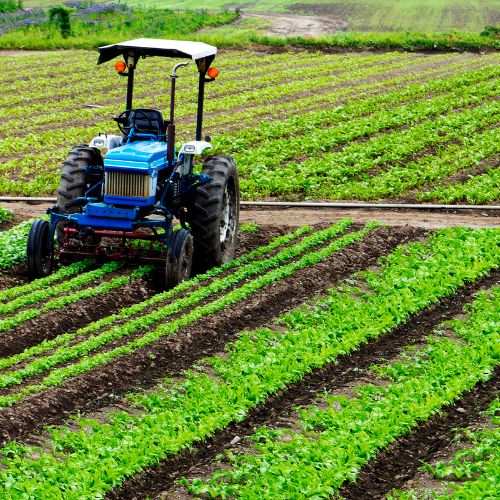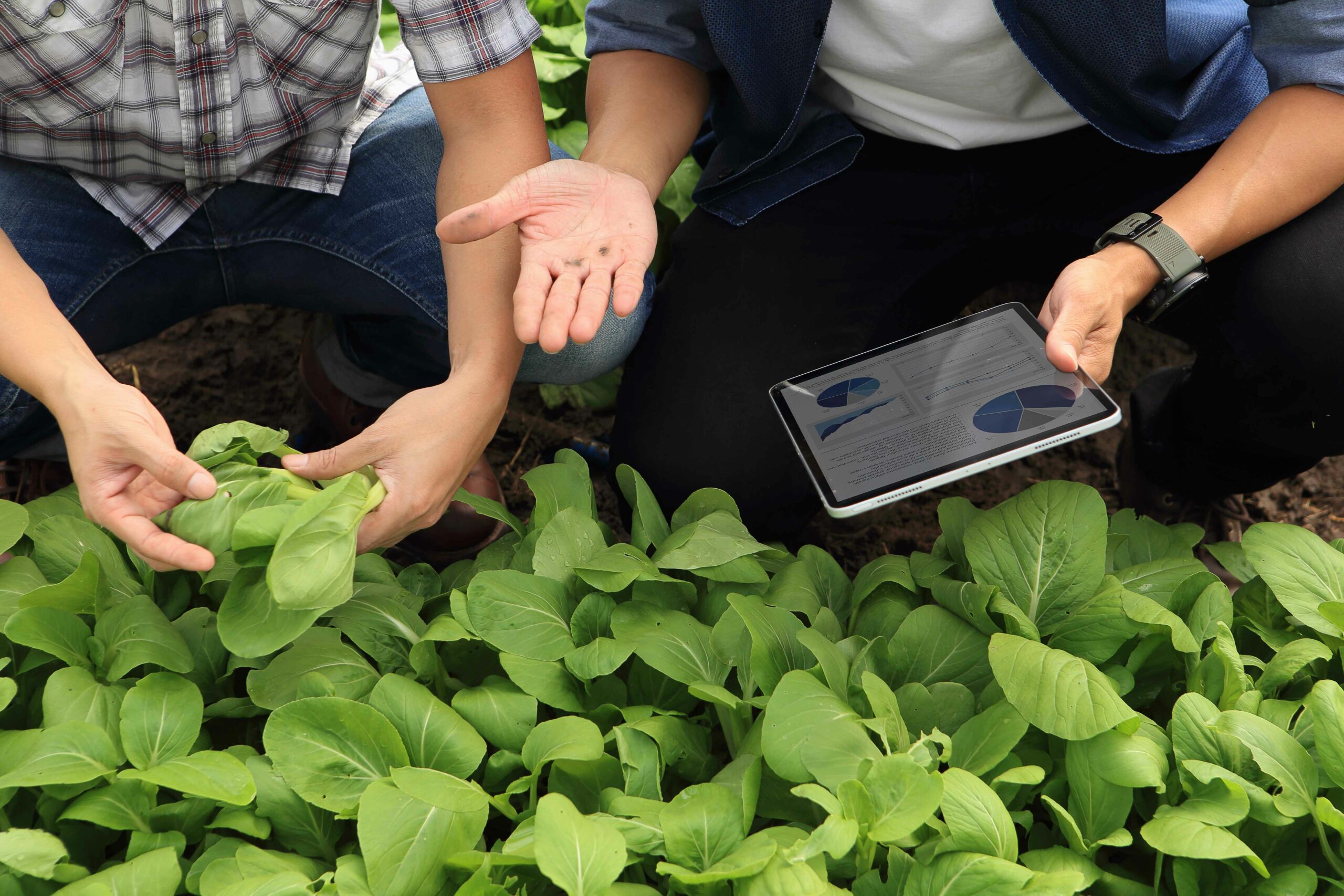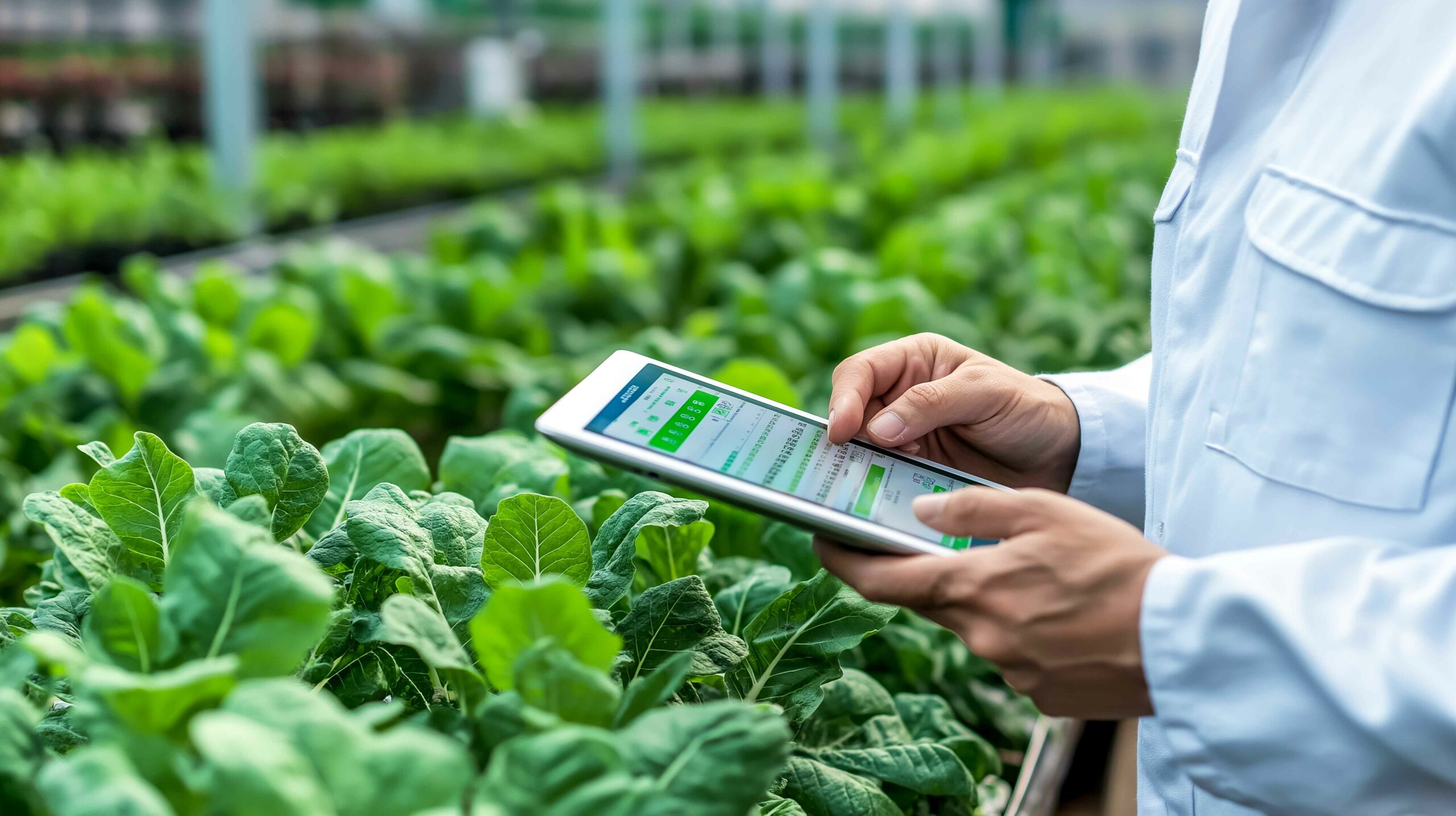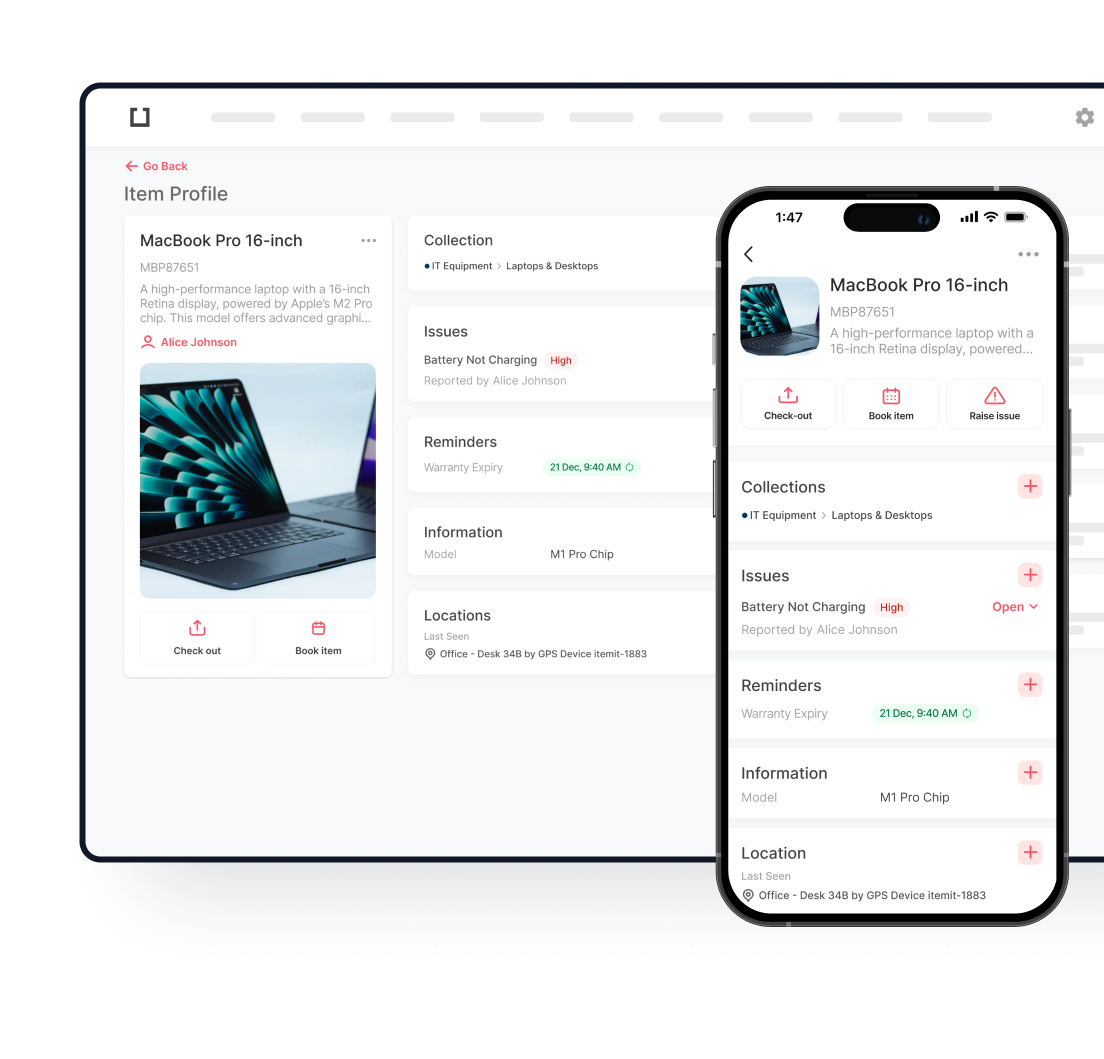
RFID Technology Revolutionizes Agricultural Asset Management
Modern farming operations face unprecedented complexity. Equipment costs continue climbing while profit margins shrink. Finding the right tool at the critical moment can mean the difference between a successful harvest and costly delays.
RFID technology in agriculture offers a practical solution to these persistent challenges. This sophisticated tracking system transforms how farms manage their valuable assets, from heavy machinery to specialized tools.
Beyond Office Applications: RFID in Farming
Many people associate asset tracking exclusively with corporate environments. This misconception limits understanding of RFID’s agricultural potential. Farm inventory management software utilizing RFID technology can monitor any physical asset with remarkable precision.
The technology requires only a flat surface for tag attachment. Tractors, combines, irrigation equipment, and even hand tools become part of an integrated tracking network. Tags withstand harsh agricultural conditions – rain, dust, temperature extremes, and constant vibration.
Weather resistance sets agricultural RFID tags apart from their office counterparts. Standard tags fail quickly under farming conditions. Agricultural versions feature protective coatings and reinforced construction. These enhancements ensure reliable performance throughout multiple growing seasons.
Agricultural operations benefit from this comprehensive visibility. Managers know exactly where every piece of equipment sits at any given moment. This knowledge eliminates the frustrating searches that waste valuable time during peak seasons.

Implementing RFID for Agriculture Operations
Setting up farm asset management systems using RFID technology follows a straightforward process. Each piece of equipment receives a unique RFID tag placed in a protected location unlikely to sustain damage during normal operations.
Tag placement requires strategic thinking. Exposed locations invite damage from debris, chemicals, or normal wear. Hidden spots protect tags while maintaining scan accessibility. Experienced installers know exactly where to position tags for maximum durability.
Scanning begins the tracking process. Your smartphone or tablet becomes a powerful agriculture data management tool. The initial scan creates a digital profile containing detailed equipment information – purchase date, maintenance history, operating specifications, and current condition notes.
GPS tracker for farm equipment functionality integrates seamlessly with RFID systems. This combination provides both location data and equipment status information. Managers can track a harvester’s field position while monitoring its operational parameters.
Data collection happens automatically. Each time tagged equipment passes near an RFID reader, the system logs the interaction. This creates comprehensive usage patterns showing when and where assets are deployed most frequently.
Reader placement affects system effectiveness. Strategic positioning ensures complete coverage without creating blind spots. Gates, fuel stations, and equipment storage areas represent ideal reader locations. These chokepoints capture most equipment movement naturally.
Small-Scale Operations Benefit Too
Smallholdings and family farms gain significant advantages from RFID technology in agriculture. Size doesn’t determine the value of asset tracking – organization and efficiency matter regardless of operation scale.
Sheep shearing equipment, milking systems, and field preparation tools all benefit from tracking. Small farms often have limited equipment budgets, making loss prevention particularly important. RFID tags help protect these investments.
Agriculture business management becomes more sophisticated with comprehensive asset visibility. Even modest operations can achieve professional-level organization and control over their equipment inventory.
The technology scales appropriately. A small dairy farm might track twenty items while a large grain operation monitors hundreds. The underlying principles remain consistent – better organization leads to improved efficiency and reduced costs.
Rural operations face unique challenges that RFID addresses effectively. Remote locations make equipment recovery difficult after theft. Extended distances between work areas complicate manual tracking efforts. RFID systems overcome these geographical disadvantages through automated monitoring.
Cost considerations matter more for smaller operations. Fortunately, RFID prices have dropped significantly in recent years. Basic tracking systems now cost less than many farm tools. This affordability opens RFID benefits to operations previously excluded by high implementation costs.
Enhanced Security Through Technology
RFID for agriculture provides multiple security layers. Visible tags often deter opportunistic theft. Potential thieves recognize that tagged equipment can be tracked and recovered quickly.
Historical data proves invaluable during theft investigations. The system maintains detailed logs showing where equipment traveled and when. This information helps law enforcement agencies locate stolen items and prosecute criminals.
Recovery rates improve dramatically with RFID tracking. Traditional methods rely on serial numbers and visual identification. RFID systems provide precise location data, enabling rapid recovery before thieves can dispose of stolen equipment.
Tags resist removal attempts. Quality agricultural RFID tags feature tamper-resistant designs that make unauthorized removal difficult and obvious. Damaged tags often indicate tampering attempts, alerting managers to potential security issues.
Geofencing capabilities enhance security further. Virtual boundaries trigger alerts when equipment moves beyond designated areas. Unauthorized movement during off-hours generates immediate notifications. This early warning system enables rapid response to potential theft situations.
Insurance companies recognize RFID’s security benefits. Many carriers offer premium discounts for operations using comprehensive tracking systems. These savings often offset implementation costs within the first year.

Predictive Maintenance Revolution
Equipment failures follow Murphy’s Law – they occur at the worst possible moments. Harvest season breakdowns cost farmers thousands of dollars in delays and emergency repairs.
RFID technology in agriculture enables proactive maintenance scheduling. The system tracks equipment usage hours and operating conditions. Maintenance alerts appear automatically based on manufacturer recommendations and actual usage patterns.
This approach prevents many catastrophic failures. Regular maintenance catches problems before they cause complete breakdowns. A worn belt replaced during scheduled maintenance costs far less than emergency repairs during harvest.
Agriculture data management systems integrate maintenance records with usage tracking. This combination reveals patterns showing which equipment requires attention most frequently. Managers can adjust maintenance schedules based on actual performance data rather than generic recommendations.
Budget planning improves with predictive maintenance. Known maintenance costs are easier to plan for than emergency repairs. This predictability helps farms manage cash flow more effectively throughout the growing season.
Maintenance scheduling becomes more sophisticated with detailed usage data. Equipment operating in dusty conditions requires more frequent filter changes. Machines working longer hours need accelerated service intervals. RFID systems capture these variations automatically.
Service technicians benefit from comprehensive equipment histories. Complete maintenance records help diagnose problems more quickly. This efficiency reduces service calls and minimizes equipment downtime during critical periods.
Real-Time Operational Intelligence
Modern farm inventory management software provides unprecedented operational visibility. Managers can monitor equipment deployment across multiple fields simultaneously. This overview reveals optimization opportunities that weren’t previously apparent.
Labor efficiency increases when workers can quickly locate needed equipment. GPS tracker for farm equipment capabilities eliminate time-consuming searches. Workers spend more time on productive tasks rather than hunting for tools.
Utilization analysis identifies underused equipment. Expensive machinery sitting idle represents poor return on investment. RFID data reveals which items might be sold or rented to other operations during slow periods.
Agriculture business management benefits from detailed reporting capabilities. Usage patterns help managers decide when to replace aging equipment or expand their fleet. Data-driven decisions typically produce better outcomes than intuition-based choices.
Seasonal patterns emerge from accumulated tracking data. Certain equipment shows peak usage during specific periods. This information guides scheduling decisions and helps identify bottlenecks before they impact operations.
Field efficiency improves through better equipment allocation. Managers can balance workloads across machines to prevent overuse. This distribution extends equipment life while maintaining productivity levels.
Equipment sharing becomes feasible with accurate tracking. Neighboring farms can coordinate equipment loans based on real usage data. This cooperation reduces individual investment requirements while maintaining operational flexibility.
Integration with Modern Farming Systems
RFID technology in agriculture works alongside other precision farming technologies. GPS systems, weather stations, and crop monitoring sensors create comprehensive operational pictures.
Data integration enables sophisticated analytics. Managers can correlate equipment usage with field conditions, weather patterns, and crop performance. These insights drive continuous improvement in farming practices.
Communication between systems reduces manual data entry. Information flows automatically between RFID tracking, maintenance scheduling, and financial management systems. This integration eliminates duplicate record-keeping and reduces errors.
Mobile applications provide field access to all tracking information. Farmers can check equipment status, review maintenance schedules, and update records without returning to the office. This flexibility supports modern farming’s fast-paced demands.
Cloud-based systems enable remote monitoring. Farm managers can track operations from anywhere with internet access. This capability proves valuable during extended travel or when managing multiple locations.
Third-party integrations expand system capabilities. Accounting software can automatically calculate equipment depreciation based on actual usage hours. Parts ordering systems can predict inventory needs from maintenance schedules.

Cost-Benefit Analysis
Initial RFID implementation requires modest investment. Tag costs continue declining while functionality improves. Most agricultural operations recover their investment within the first growing season through improved efficiency and reduced losses.
Labor savings accumulate quickly. Time previously spent searching for equipment can be redirected to productive activities. These savings compound throughout the growing season.
Insurance benefits often offset system costs. Many insurers offer discounts for operations using comprehensive tracking systems. The reduced theft risk and improved maintenance records justify lower premiums.
Equipment lifespan extends with proper tracking and maintenance. Well-maintained machinery operates longer and requires fewer major repairs. This longevity improves return on equipment investments significantly.
Fuel consumption decreases through optimized equipment deployment. Reducing unnecessary trips between fields saves both time and diesel costs. These savings accumulate substantially over large operations.
Administrative efficiency improves with automated record-keeping. Tax preparation becomes simpler with detailed equipment usage logs. Depreciation calculations require less manual calculation and estimation.
Resale values increase for well-documented equipment. Complete maintenance histories and usage records enhance buyer confidence. This documentation often justifies premium prices during equipment sales.
Advanced RFID Applications in Agriculture
Livestock tracking represents an expanding RFID application. Individual animal identification enables detailed health monitoring and breeding record management. This precision supports genetic improvement programs and disease prevention efforts.
Crop storage monitoring utilizes RFID technology for grain bin management. Tags attached to storage containers track inventory levels and quality parameters. This application prevents spoilage and optimizes storage rotation.
Chemical application tracking ensures regulatory compliance. RFID systems monitor pesticide and fertilizer usage across different fields. This documentation supports certification programs and environmental reporting requirements.
Harvest tracking follows crops from field to storage. Quality parameters and origin information travel with each load. This traceability supports premium marketing opportunities and food safety requirements.
Employee access control integrates with equipment tracking. RFID badges prevent unauthorized equipment operation while logging operator assignments. This capability supports training programs and accountability measures.
Future Developments in Agricultural RFID
Technology continues advancing rapidly. Next-generation RFID tags include sensors monitoring temperature, vibration, and other operational parameters. These enhanced capabilities provide even more detailed equipment insights.
Artificial intelligence integration enables predictive analytics. Systems will soon predict equipment failures before they occur, allowing preventive interventions. This capability will further reduce downtime and maintenance costs.
Blockchain technology may provide secure, tamper-proof equipment histories. This advancement would enhance resale values and provide certified maintenance records for warranty claims.
Satellite connectivity eliminates cellular coverage limitations. Remote fields will have the same tracking capabilities as operations near cellular towers. This expansion opens RFID benefits to previously underserved agricultural areas.
Battery life improvements extend tag operational periods. Solar charging capabilities may eventually eliminate battery replacement requirements. These advances reduce long-term maintenance costs and system complexity.
Miniaturization enables tracking of smaller items. Hand tools and spare parts become trackable as tag sizes decrease. This expansion broadens RFID applications throughout agricultural operations.
Cross-Industry Applications and Learnings
Agriculture isn’t the only sector benefiting from RFID technology. The healthcare industry has successfully implemented RFID in healthcare to track critical medical equipment, ensuring life-saving devices are always available when needed. These medical applications share many similarities with agricultural tracking – both industries require reliable asset location, maintenance scheduling, and theft prevention.
Expensive agricultural machinery often requires specialized monitoring approaches similar to medical equipment. High value asset tracking systems provide enhanced security features for combines, tractors, and other premium equipment worth hundreds of thousands of dollars. These systems include additional sensors, redundant communication methods, and advanced alert mechanisms that protect major investments from theft and unauthorized use.
Making the Transition
Successful RFID implementation in farming requires careful planning. Start with high-value equipment that moves frequently between locations. This approach demonstrates value quickly while keeping initial costs manageable.
Employee training ensures system adoption. Workers need to understand both the technology and its benefits. Proper training reduces resistance and maximizes system effectiveness.
Choose systems designed specifically for agricultural environments. Generic tracking solutions may not withstand farming’s demanding conditions. Agricultural-specific systems provide better durability and functionality.
Consider scalability when selecting systems. Growing operations need platforms that can accommodate additional equipment without major upgrades. This foresight prevents costly system replacements as operations expand.
Pilot programs validate system benefits before full deployment. Testing RFID on a subset of equipment provides experience and identifies potential issues. This cautious approach reduces implementation risks while building confidence.
Vendor selection impacts long-term success. Choose suppliers with agricultural experience and local support capabilities. Technical problems require quick resolution during critical farming periods.
Transforming Agricultural Operations
RFID technology represents a fundamental shift in farm management approaches. Traditional methods relied on memory and manual record-keeping. Modern systems provide accurate, real-time information that enables better decision-making.
Agriculture business management becomes more professional and systematic. RFID tracking app provides the data foundation for evidence-based management decisions. This analytical approach typically produces superior results compared to traditional methods.
Would you like to explore how RFID technology can transform your agricultural operation? Contact our agricultural tracking specialists at team@itemit.com to discuss your specific needs and develop a customized implementation plan.

Try itemit
Choose a better way to track
your assets.
Start your free 14-day trial now!

Keep Learning
itemit Blog
Tips, guides, industry best practices, and news.
Which Is Better? RFID Tags Or Barcodes?
Is RFID asset tracking better than using barcodes or is it vice versa? Read this post now to discover which option is ideal for you!
The Future Of Asset Tracking Involves RFID Tags: Here’s Why
Find out exactly why the future of asset tracking in the workplace involves RFID asset tracking by reading this article now!
Asset Management Made Simple: How RFID Tags Can Help
Want to improve your asset management? use RFID tags and a better asset register format to make it much simpler. Read this post to find out how!


